Iron deficiency: neurological and psychiatric symptoms + what to eat
Iron deficiency is a dangerous condition leading to serious neurological and skin symptoms.


Learn more about our editorial process
.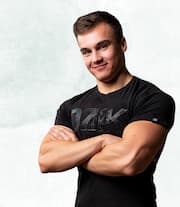

Learn more about our editorial process
.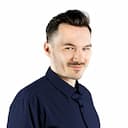

Learn more about our editorial process
.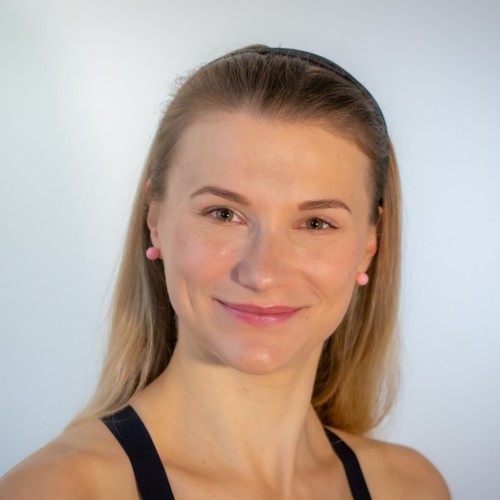

Learn more about our editorial process
.
Why you can trust us
Articles on Natu.Care are written based on scientific research, data from government websites and other reliable sources. The texts are written in cooperation with doctors, nutritionists and other health and beauty experts. Articles are reviewed before publication and during significant updates.
.Learn more about our editorial process
.Information about advertisements
Content on Natu.Care may contain links to products from the sale of which we may receive a commission. When creating content, we adhere to high editorial standards and take care to be objective about the products discussed. The presence of affiliate links is not dictated by our partners, and we select the products we review ourselves completely independently.
.Learn more about our terms and Conditions
.Iron deficiency anaemia affects more than 1.2 billion people worldwide. Women and children are particularly vulnerable, but men are not spared from the problem either.
With clinical nutritionist Jakub Pągowski, we will suggest how to prevent iron deficiency and what to eat to eliminate it as quickly as possible.
From this article you will learn:
- What are the symptoms of iron deficiency.
- What untreated iron deficiency results in.
- What to eat to get rid of iron deficiency.
- What to eat to get rid of iron deficiency.
- What are the symptoms of iron deficiency?
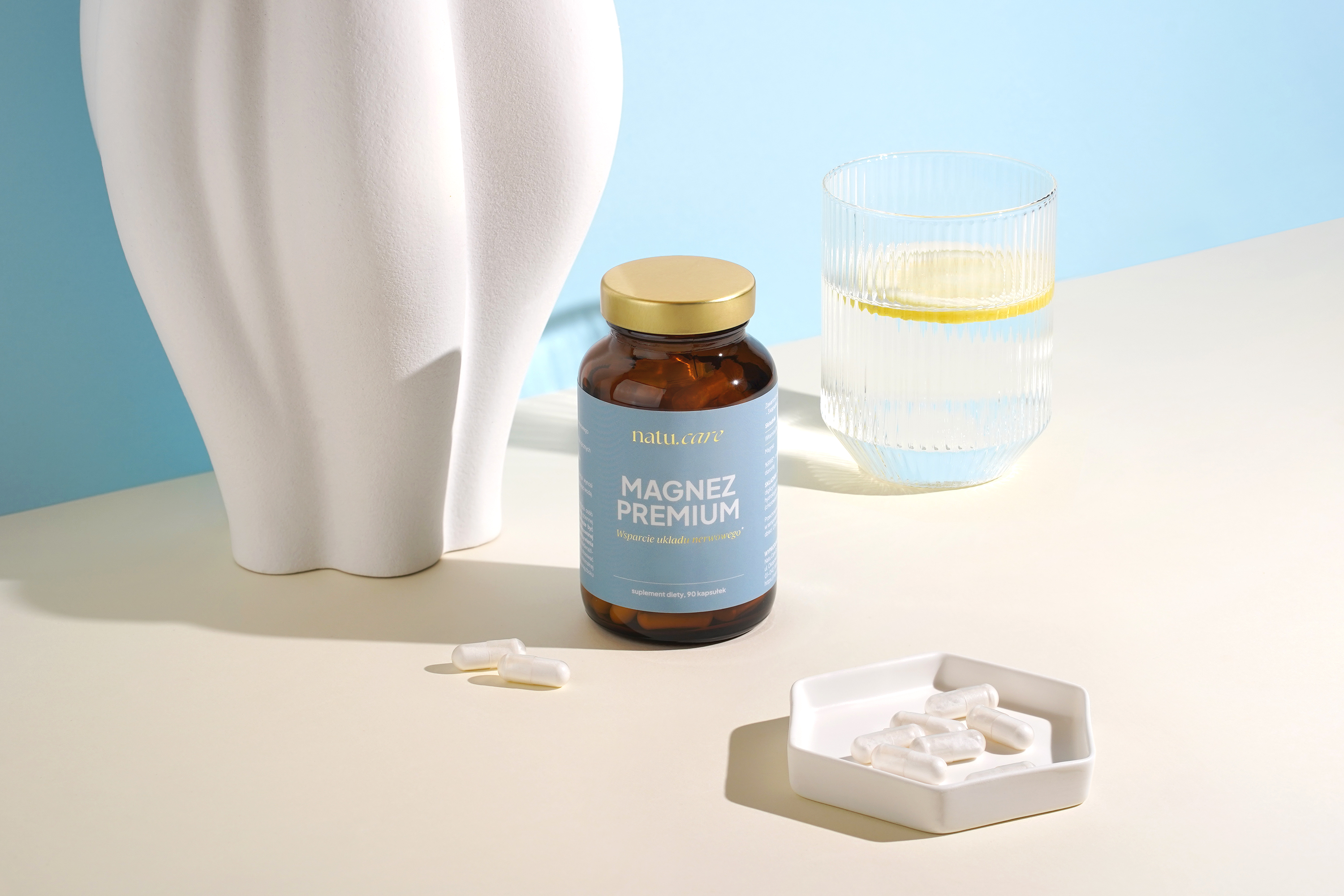
Sprawdź, co połączenie magnezu i witaminy B6 może zrobić dla Twojego zdrowia! -15% z kodem BLOG15
Natu.Care Magnez Premium + Witamina B6
Wesprzyj prawidłowe funkcjonowanie układu nerwowego, krwionośnego i mięśniowego dzięki synergicznemu działaniu magnezu i witaminy B6. Odkryj pełnię korzyści dla Twojego zdrowia każdego dnia!
Sprawdź cenę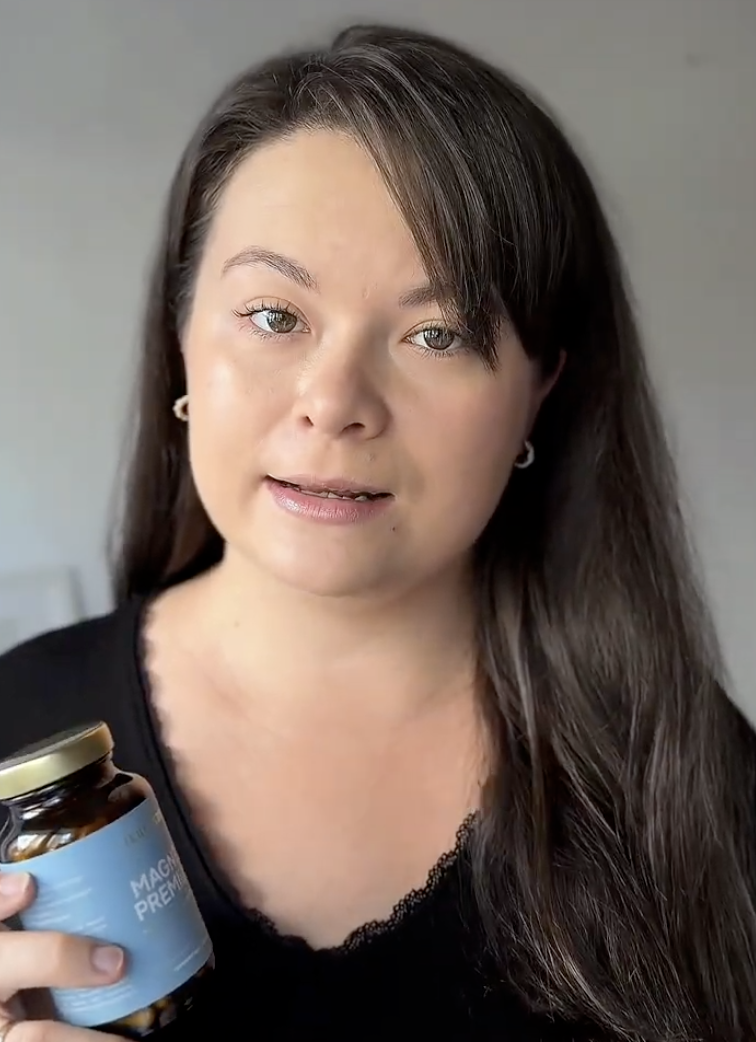
Magnez Premium przyjmuję już od 2 miesięcy i naprawdę czuję się znacznie lepiej. Mam więcej energii, przestałam mieć skurcze i nie denerwuję się już tak szybko, co w przypadku bycia mamą – bywa wyzwaniem!@DianaW.
Is iron deficiency dangerous?
.
Yes, a deficiency of iron can lead to various health problems. One of the main risks is anemia iron deficiency, which manifests as chronic fatigue, pallor, weakness and impaired concentration. Untreated, it even leads to impaired brain functionand.
Iron deficiency can also adversely affect the development and function of the immune system, increasing susceptibility to infection.
In children, iron deficiency can cause problems in development and learning. Insufficient iron affects brain development, often resulting in difficulty concentrating and impaired memoryand.
What are the causes of iron deficiency?
.
The main causes of iron deficiency are an inadequate diet, problems with absorption of this mineral and high blood loss (e.g. during menstruation). Intensive exercise or pregnancy also lead to iron deficiency. Judicious supplementation and a healthy diet allow to prevent deficiencyand.
.
- .
- Inadequate nutrition. Most iron is supplied to the body through the diet, so unbalanced diets, restrictive menus or eating disorders can lead to deficiency. In particular, a lack of products such as red meat, nuts or legumes results in low iron levels. .
- Problems with absorption. Some conditions and disorders, such as celiac disease or Crohn's disease, can result in problems with iron absorption in the digestive tract. This will not infrequently result in a deficiency. .
- Increased blood loss. Blood loss, for example through heavy periods, gastrointestinal bleeding or trauma, increases the need for iron. If this is not replenished, a deficiency may result. .
- High physical activity. Intense exercise can lead to iron deficiency through increased body demand, loss of iron through sweat or muscle damage leading to accelerated degradation of red blood cells. This is particularly common among professional athletes. .
- Pregnancy. During pregnancy, the need for iron increases significantly. Therefore, most women are then advised to take appropriate supplements. However, never do this on your own . Only your doctor can recommend supplementation during pregnancy or breastfeeding. .
Did you know that...
.Donating 450 ml of blood just once a year translates into an additional iron loss of approximately 230 mg, or about 0.6 mg/day on an annual basisand.
Iron deficiency - neurological, psychiatric, skin and other symptoms
.
Iron deficiency is a condition manifested by a number of symptoms. What should cause you to be concerned?"
Symptoms of iron deficiencyand:
- Extreme fatigue. .
- Dullness of the skin.
- Faintness.
- Weakness. .
- Pain or dizziness.
- Pain or dizziness.
- Chest pain or shortness of breath.
- Pain.
- Hair loss.
- Hair loss.
- Fragility of fingernails.
- Fragility of fingernails.
- Pain in the tongue.
- Pain in the tongue.
- Cold hands and feet. .
These symptoms are quite non-specific and may indicate many other health problems. Below you will find a broader description of iron deficiency symptoms that should catch your attention.
Neurological symptoms
.
In the beginning of iron deficiency, neurological symptoms are mild, but will become more severe over time. Without appropriate treatment, they can also result in serious health problems.
What are the neurological symptoms of iron deficiency?
.
Impulsivity and concentration problems
.
Iron deficiency results in less oxygen reaching the brain. The result can be problems with cognitive function. Impulsivity or difficulty concentrating are some of these symptoms. It is not uncommon that a lack of adequate iron levels will also manifest as learning difficultiesand.
restless legs syndrome
.
Prestless legs syndrome is a condition manifested by an involuntary need to move the lower extremities. One of the main causes of this condition is iron deficiency. Nevertheless, it is also sometimes caused by other health problems. Therefore, if this condition is suspected, it is essential to consult a doctorand.
Muscular weakness
.
Muscular weakness is also indirectly a neurological symptom of iron deficiency. Despite being associated with physiological symptoms at first glance, it is linked to the nervous system, as muscles receive signals from neuronsand.
Peripheral neuropathy
.
In more severe cases of iron deficiency, peripheral neuropathy can occur. This is a condition in which the nerves that send information from the brain and spinal cord to the rest of the body do not function properly. Symptoms of peripheral neuropathy caused by iron deficiency include tingling, numbness and pain in various parts of the bodyand.
Psychiatric symptoms
.
Iron deficiency affects how you feel, how you sleep and whether you have an appetite. There are some common mental signs of deficiency that should get your attention. Which ones?
Sleep problems
Apathy is a condition in which a person feels a lack of interest or motivation in any activity.
|
Psychiatric symptom . |
What are the characteristics of and
|
||
|
Mood changes . |
Iron deficiency can cause anxiety, mood swings and, in extreme cases, even depression. This is the result of reduced production of serotonin, the neurotransmitter responsible for regulating mood.
|
Iron deficiency can cause anxiety and even depression. |
|
|
Sleeping problems |
Inadequate iron levels are also associated with insomnia or poor quality sleep. Inadequate oxygen supply to the brain due to iron deficiency can lead to disorders such as excessive sleepiness or frequent night waking. |
||
|
Apathy |
Apathy is a condition in which a person feels a lack of interest or motivation to do anything. It is not uncommon for it to be caused by low iron levels, which aggravate the person's mood. Apathy |
||
|
Lack of appetite . |
Iron is essential for the normal production of appetite-regulating hormones. When its levels are insufficient, therefore, decreased appetite and associated weight loss can occur.
|
Iron is not a major contributor to appetite. |
|
|
Headache |
A decrease in the amount of oxygen delivered to the brain due to iron deficiency can cause vasodilation of blood vessels, leading to headaches.
|
It's a headache. |
Cutaneous symptoms
.
Iron deficiency also affects the appearance of your complexion. Some skin symptoms are inconspicuous, but they are often an important signal that your body needs more of this vital mineral. From pale skin to wrinkles to unwarranted itching, these symptoms may suggest a deficiency of ironand.
What are the skin symptoms of iron deficiency ?
- Pale skin. One of the most well-known symptoms of iron deficiency is pale skin. This mineral is a key component of haemoglobin - the protein that transports oxygen in red blood cells. And low levels of haemoglobin can lead to a pale complexion. .
- Wrinkles. Iron deficiency can accelerate skin ageing. Its low levels reduce the production of collagen, which can result in the appearance of wrinkles.
- Dryness and itching. Some people with iron deficiency may experience dry skin or itching. These symptoms are usually related to reduced oxygen supply to the skin tissues.
- Prone to cracking of the corners of the mouth (acrimony). Iron deficiency can result in poorer skin and mucous membranes, which in some people will manifest as cracked corners of the mouth, also known as acrimony. It is not uncommon for this to cause pain and discomfort when eating, speaking or smiling. .
- Incidence of bruising under the eyes. Although bruising under the eyes can result from many causes, it is one possible symptom of iron deficiency. The reason for this is the limited amount of oxygen reaching the skin tissues.
Other symptoms
.
Iron deficiency also manifests with other symptoms, such as extreme fatigue or chest pains. What characterises these conditions?
Extreme fatigue
.
Extreme fatigue is one of the most recognisable symptoms of iron deficiency. Iron is a component of haemoglobin, a protein in red blood cells that supplies oxygen to tissues and muscles. When iron levels are low, the body is unable to produce enough haemoglobin, leading to reduced oxygen supply and feelings of fatigue or weaknessand.
Problems with the body's production of haemoglobin are a serious symptom of iron deficiency. In such cases, it is not uncommon to need a blood transfusion..
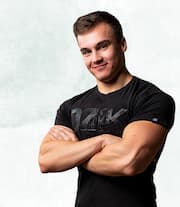 .
.
Kuba Pągowskiclinical dietitian
.
Chest pain or shortness of breath
.
People suffering from iron deficiency often experience chest pains or shortness of breath. These symptoms are due to the fact that low iron levels lead to a reduction in the number of red blood cells and lower haemoglobin levelsand.
This results in less oxygen being delivered to the body's cells, putting additional strain on the heart. As a result, symptoms can include chest pain or shortness of breath .
Nail brittleness or hair loss
.
Nail brittleness and hair loss are common warning signs of iron deficiency. This mineral is an important component affecting the process of cell growth and regeneration. Therefore, low levels of it can negatively affect the health as well as the appearance of nails and hairand.
They require adequate amounts of iron for proper growth, so a deficiency can lead to weakness.
.
Cold hands and feet
.
This unpleasant symptom is the result of a reduction in red blood cells, which results in a reduced blood supply to the limbsand.
Iron is crucial for the production of red blood cells, which carry oxygen to various parts of the body. When there is too little of it, less blood will reach the hands and feet, resulting in them getting colder .
Ear noise
.
In some people, iron deficiency can lead to so-called tinnitus, or tinnitus in the ears. Although this phenomenon is not yet fully understood, it has been suggested that it may be related to an increased workload on the heart, which has to work harder in response to a shortage of red blood cellsand.
This extra effort on the heart muscle leads to changes in blood flow, which in turn can be experienced as tinnitus.
.
Iron deficiency - effects
.
In addition to symptoms that significantly reduce quality of life, untreated iron deficiency can lead to permanent health consequences. Chronic anaemia caused by low iron levels forces the heart to work harder to compensate for the body's oxygen deficiency. This results in a higher risk of cardiovascular diseaseand.
Extreme iron deficiency can also lead to aplastic anaemia, a condition characterised by the inability of the bone marrow to produce enough red blood cells. This is a life-threatening health problem that requires immediate medical interventionand.
What is the daily requirement for iron?
.
Daily iron requirements vary according to age and gender. It also changes during pregnancy and lactation. What are the recommendations for the Polish population?"
.
|
Age and gender . |
Daily iron requirementsand |
|
|
Infants 0-6 months . |
0.3 mg |
|
|
Infants 7-11 months . |
11 mg
|
|
|
Children 1-3 years |
7 mg |
|
|
Children 4-9 years |
10 mg |
|
|
Boys 10-12 years |
10 mg |
|
|
Girls 10-12 years |
||
| . |
10 (15) mg* |
|
|
Boys 13-18 years . |
12 mg |
|
|
Girls 13-18 years |
||
| . |
15 mg |
|
|
Males > 19 years |
10 mg |
|
|
Females 19-50 years |
18 mg |
|
|
Women > 50 years |
10 mg |
* Before or after the onset of menstruation
.
Pregnant women should provide their bodies with 27 mg of iron per day - regardless of age. And the requirement for breastfeeding mums is 10 mg regardless of age.
People on a plant-based diet should multiply the basic requirement times 1.8. As a result, for example, a woman who is vegan should consume 32 mg of iron per day..
 .
.
Kuba Pągowskiclinical dietitian
.
Iron deficiency - what to eat to supplement?
.
To supplement iron deficiency, eat meat (e.g. beef, pork, lamb), seafood (mussels, prawns, oysters) and vegetables (peas, spinach, broccoli). Other sources of iron include bread, as well as fruits such as strawberries, watermelon, sultanas or dates. You can also make up for iron deficiency with tofu.
What to eat for iron deficiencyand?
- .
- Meat - beef, lamb, chicken, turkey, veal, liver.
- Seafood and fish - shrimp, mussels, scallops, oysters, tuna, sardines, mackerel.
- Vegetables - spinach, yams, peas, broccoli, kale, beans.
- Fruits - strawberries, sultanas, dates, prunes, apricots, peaches.
- Other - tofu, bread (white and whole grain), oatmeal, rice.
One of the best sources of iron is also offal..
 .
.
Kuba Pągowski clinical dietitian
What about beetroot
.It's been established that there is a lot of iron in beetroot and we should eat it often or at least drink the juice of this vegetable. In fact, beetroot provides 1.7 mg of iron in 100 g and 1 mg in 100 ml of juice. Furthermore, the iron in beetroot is in a non-haemic form - that is, not as well absorbed as haemic iron (from meats).
.
How much iron is provided by individual foods?
. .
|
Iron content per 100 gand |
|
|
Bitter chocolate 85% . |
10.9 mg |
|
Poultry liver . |
8.99 mg . |
|
Pumpkin seeds |
8.82 mg |
|
Beef liver . |
6.54 mg . |
|
Oatmeal . |
3.90 mg |
|
Lentils |
3.33 mg |
|
Halves |
2.81 mg |
|
Beef . |
2.74 mg |
|
Spinach |
2.71 mg |
|
Dried apricots |
2.66 mg |
|
Tofu |
2.66 mg |
|
Rodins |
2.30 mg |
|
Green peas |
1.90 mg |
|
Hen's egg |
1.67 mg . |
Important
Some foods interfere with iron absorption. These include, for example, dietary fibre, coffee, black tea, dairy, calcium, magnesium, zinc or phosphates (e.g. in Coca-Cola). Avoid combining rich sources of iron as well as supplementation with these products.
Hemic and non-haemic iron - what are the differences?
.
Iron is found in the diet in two basic forms: haemic and non-haemic.
Hemic iron is mainly found in animal products such as meat, poultry and fish. It is characterised by its high bioavailability - the body can easily assimilate and utilise it.
Non-heme iron on the other hand, is found in plant-based products such as legumes, nuts, seeds, cereals and some vegetables and fruits. It is less bioavailable than haem iron, meaning that the body may have difficulty assimilating it.
This is particularly important for people who do not eat meat, as they need to consume larger amounts of products containing non-haem iron to meet their daily requirements for this mineral.
Iron deficiency in children and infants - symptoms and causes
.
Along with women, children and infants are the group most commonly affected by iron deficiency. The World Health Organisation reports that nearly 40% of the youngest aged between 6 months and 10 years suffer from iron deficiency anaemia. What causes this condition?
Causes of iron deficiency in children and infantsand:
- Diet low in iron. .
- Fast growth, which requires the production of red blood cells and therefore iron.
- Fast growth, which requires the production of red blood cells and therefore iron.
- Gastrointestinal tract problems affecting iron absorption. .
- Overweight or obesity. .
- Low birth weight. .
Symptoms of iron deficiency in children and infants
.
The symptoms of iron deficiency in toddlers are very similar to the general symptoms. What can you expectand?
- Painfulness of the skin, .
- poor appetite, .
- fatigue and weakness, .
- growth disorders (e.g. poor weight gain), .
- spasticity, .
- cold hands and feet, .
- disorders of concentration, .
- irregular breathing, .
How to make up for iron deficiency in a child?
.
The healthiest way to boost your child's iron levels is a diet rich in this mineral. Include in the diet iron-rich foods such as meat, fish, dark green leafy vegetables, seeds, legumes, and whole-grain cereal products.
.
In some children it may also be necessary to take iron supplements or medication. However, never administer such remedies on your own. Always consult your doctor first, who will choose the preparation individually.
Also make sure your child is getting enough vitamin C, which helps the body to absorb iron. Fresh fruit and vegetables, especially citrus, strawberries and red peppers are excellent sources of this vitaminand.
Non-heme iron is always worth giving along with vitamin C. A typical healthy dinner would include, for example, a pork chop (source of iron), sauerkraut (source of vitamin C) and potatoes as a side dish..
 .
.
Kuba Pągowski clinical dietitian
.
Iron deficiency in pregnancy
.
Iron deficiency in pregnancy is the most common cause of anaemia in expecting women. The condition results in reduced levels of red blood cells in the body, making it difficult to transport oxygen to the cells, including the developing foetus. As a result, iron deficiency in pregnancy can lead to premature birth, low birth weight of the baby and even miscarriageand.
During pregnancy, the need for iron increases significantly, especially in the second half of pregnancy. This is due to the development of the foetus, and also because of the increase in the amount of blood in the mother's body. Therefore, it is very important to maintain normal iron levels throughout pregnancyand.
Although a large proportion of iron requirements can be supplemented with diet, supplementation is also often necessary. The World Health Organisation recommends taking both folic acid and ironand while expecting a baby.
Please note
.Never take any supplements during pregnancy without consulting your doctor. It is the specialist who knows your state of health and your body's needs. Therefore, only he or she, can recommend the right dietary supplements for you.
.
Iron deficiency in pregnancy - effects on the baby
.
Iron deficiency in pregnancy can have serious consequences for both the mother and the developing baby. The condition often affects the intellectual and physical development of the foetus, and leads to complications during deliveryand.
What effects does iron deficiency in pregnancy have on the baby ?
- Low birth weight. This increases the risk of health problems, such as respiratory failure and joint mobility problems.
- The risk of iron deficiency is increased.
- Delayed mental and physical development. Iron deficiency in a pregnant woman can result in neurological disorders in the child. This includes learning difficulties, concentration disorders or delayed motor development.
- Premature birth. This results in a much higher risk of complications for both mother and baby.
.
- Anemia in infants.This is a condition in which the number of red blood cells is low, limiting the blood's ability to supply oxygen to the baby's organs.
- Increased risk of infections. Insufficient iron can weaken the immune system, making the newborn more susceptible to infections.
What to eat to avoid iron deficiency during pregnancy?
.
To avoid iron deficiency in pregnancy, ensure you eat a proper diet. Eat foods that will provide you with this mineral, such as red meat, poultry, seafood, as well as vegetables, especially leafy and dark green ones such as spinach or kale, and legumes - such as lentils, chickpeas, beansand.
.
It is also important to eat whole grain cereal products such as bread and brown rice, and a variety of seeds and nuts, especially pumpkin seeds and hazelnuts, which can provide a high amount of iron .
Remember, too, that iron is better absorbed by the body when you take it in combination with vitamin C. Therefore, enrich your diet with fruits and vegetables rich in this vitamin, such as citrus, kiwi, peppers or broccoli.
How long does it take to treat iron deficiency?
The length of treatment for iron deficiency depends on a number of factors, such as the severity of the deficiency, its cause, and the patient's overall health. It usually takes about 3-6 months for iron levels to return to normal after a deficiency has been diagnosedand.
Did you know that
.The development cycle of red blood cells lasts about 12-15 days, so after this time the body already starts to "benefit" from iron replenishment. The supply of the missing blood cells, as well as the body's iron stores, is estimated to last about 90 days.
The body's supply of iron is estimated to last about 90 days.
During treatment, iron is administered in the form of a drug or dietary supplement. In addition, patients are advised to follow an iron-rich diet. After about six months, levels of this mineral should return to normal - this is, however, dependent on other factors, so regular blood testsand are crucial.
Even after iron levels are stabilised, it is important to continue to eat an adequate diet to maintain normal levels in the body. In addition, iron levels should be monitored. This will allow a timely response to any return of the deficiency.
What test checks iron levels in the body?
.
The test that checks iron levels in the body is the serum iron test. With this test, it is possible to diagnose, for example, iron deficiency anaemia or haemochromatosis.
The result of this test is a serum iron level.
This test measures both the direct serum iron concentration and the iron binding capacity of transferrin (TIBC), which is the main iron transport protein in the body.
Nevertheless, testing blood iron levels alone is often insufficient. If there is a risk of excess or deficiency, it is necessary to assess the overall iron management. Therefore, if you suspect a deficiency, have tests done on the levels of iron, ferritin, transferrin in your blood, as well as UIBC, or latent iron binding capacity.
What to do if you have an iron deficiency?
What drugs and tablets for iron deficiency?
.
Aura Herbals Ferradrop
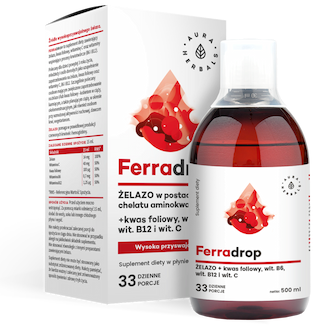
- Active ingredients: iron, vitamin C, vitamin B12, copper, vitamin B6, folic acid .
- Form: liquid .
- Dose: 15 ml per day .
- Sufficient for: 33 days .
Product description
A dietary supplement in the form of a convenient-to-drink liquid covers the daily requirement for iron, whichó is an extremely important mineral for the proper functioning of the organism. The formula is enriched with valuable ingredients: folic acid, vitamin B6, B12 and C.
.Pros and cons
A dietary supplement in the form of a convenient-to-drink liquid covers the daily requirement for iron, whichó is an extremely important mineral for the proper functioning of the organism. The formula is enriched with valuable ingredients: folic acid, vitamin B6, B12 and C.
.Additional information
A dietary supplement in the form of a convenient-to-drink liquid covers the daily requirement for iron, whichó is an extremely important mineral for the proper functioning of the organism. The formula is enriched with valuable ingredients: folic acid, vitamin B6, B12 and C.
.User review
A dietary supplement in the form of a convenient-to-drink liquid covers the daily requirement for iron, whichó is an extremely important mineral for the proper functioning of the organism. The formula is enriched with valuable ingredients: folic acid, vitamin B6, B12 and C.
.Dr Jacob's Liposomal iron
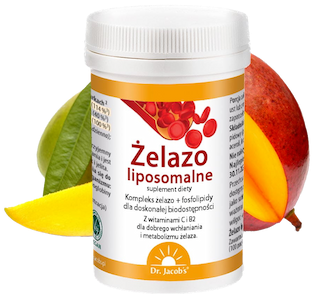
- Iron content: 8 mg .
- Additional active ingredients: vitamin C, vitamin B2, silicon
- Form: powder .
- Dose: 1 or 2 scoops daily .
- Sufficient for: 50 or 100 days .
Product description
Dr. Jacob's Liposomal Iron is a dietary supplement that
is ideal for people with iron deficiency. Thanks to its high bioavailability and bioavailability, it provides an effective dose of this important element.
The iron in the phospholipid complex is surrounded by liposomes, which&oac;re facilitate its absorption in the intestine. The product has a pleasant mango fruit flavour, which also makes it attractive for children.
Pros and cons
Dr. Jacob's Liposomal Iron is a dietary supplement that
is ideal for people with iron deficiency. Thanks to its high bioavailability and bioavailability, it provides an effective dose of this important element.
The iron in the phospholipid complex is surrounded by liposomes, which&oac;re facilitate its absorption in the intestine. The product has a pleasant mango fruit flavour, which also makes it attractive for children.
Additional information
Dr. Jacob's Liposomal Iron is a dietary supplement that
is ideal for people with iron deficiency. Thanks to its high bioavailability and bioavailability, it provides an effective dose of this important element.
The iron in the phospholipid complex is surrounded by liposomes, which&oac;re facilitate its absorption in the intestine. The product has a pleasant mango fruit flavour, which also makes it attractive for children.
User review
Dr. Jacob's Liposomal Iron is a dietary supplement that
is ideal for people with iron deficiency. Thanks to its high bioavailability and bioavailability, it provides an effective dose of this important element.
The iron in the phospholipid complex is surrounded by liposomes, which&oac;re facilitate its absorption in the intestine. The product has a pleasant mango fruit flavour, which also makes it attractive for children.
{product:27MyNdzd6ggRgFzAZ2VPes }}
A helpful ingredient
.The use of iron from medicines or supplements is often associated with gastrointestinal complaints - abdominal pain, constipation and gas. You can avoid this by supporting yourself with lactoferrin. It can reduce these symptoms and improve iron absorption.
I recommend choosing chelated iron. It is well absorbed and less likely to cause side effects..
 .
.
Kuba Pągowski clinical dietitian
.
Concealed iron deficiency - what is it?
.
Clandestine iron deficiency, also known as iron deficiency without anaemia, is a condition in which iron levels in the body are low, but not low enough to cause full-blown anaemia.
This is usually the initial phase of iron deficiency, which can evolve into anaemia if low iron levels are not started supplemented in time. The cause of latent iron deficiency is usually a poor diet or problems with iron absorptionand.
In latent iron deficiency, the body uses iron stores that it stores in the liver, spleen and bone marrow to maintain red blood cell production. As these stores are used up, iron levels drop, but are still sufficient to prevent anaemia.
Although latent iron deficiency does not lead to anaemia (immediately) it can cause various symptoms such as fatigue, weakness, pale skin, irritability, anaemia, difficulty concentrating and impaired physical performance. Therefore, it is important to treat this condition quickly at an early stage through proper diet and possible dietary supplements.
See also:
Summary
.
- Iron deficiency in the body can lead to serious health problems, such as anaemia, weakened immune systems and impaired development and learning in children.
- Causes of iron deficiency include an inadequate diet, problems assimilating this mineral, high blood loss, excessive physical exertion or pregnancy. .
- General symptoms of iron deficiency include extreme fatigue, pale skin, weakness, headaches, brittleness of nails and sore tongue. .
- Psychiatric symptoms of iron deficiency include mood changes, sleep problems, apathy and lack of appetite. .
- Cutaneous symptoms of iron deficiency include pallor, wrinkles, dry skin, itching, flaky skin, cracking at the corners of the mouth or bruising under the eyes.
- A diet rich in meat, seafood, vegetables, fruit, tofu and legumes helps prevent iron deficiency.
- The main causes of iron deficiency in children and infants are a diet low in this mineral, rapid growth and problems with the digestive tract.
- Iron deficiency in children and infants is a common cause of iron deficiency.
- Iron deficiency during pregnancy can lead to premature birth, low birth weight of the baby and even miscarriage.
- Treatment of iron deficiency in children and infants is the most common.
- Treatment of iron deficiency, which usually involves the use of dietary supplements and an iron-rich diet, usually takes between three and six months.
- Treatment of iron deficiency, which usually involves the use of dietary supplements and an iron-rich diet, usually takes between three and six months.
- Clandestine iron deficiency is a condition in which iron levels in the body are low, but not yet low enough to cause anaemia.
- Clandestine iron deficiency is a condition in which iron levels in the body are low, but not yet low enough to cause anaemia.
FAQ
International Classification of Diseases ICD-10 - what number does iron deficiency have?
.Iron deficiency iron deficiency in the International Classification of Diseases (ICD-10), which is the key standard for diagnosing and classifying diseases worldwide, is coded D50. This is a general category for iron deficiency anaemia, covering its various forms.
Does iron deficiency affect weight gain or weight loss?
.Iron deficiency can be associated with weight loss. This condition sometimes leads to anorexia. On the other hand, iron plays an important role in metabolism, so a deficiency of this nutrient can result in fatigue and lack of energy, which in turn discourages regular physical activity.
Iron deficiency can be associated with weight loss.
It is worth noting, however, that changes in body weight alone are not directly attributed to iron deficiency. More often, they are due to accompanying health conditions.
It is important to note that changes in body weight are not directly attributable to iron deficiency.
What is indicated by iron deficiency iron deficiency with good morphology?
.Iron deficiency without anaemia, i.e. with a normal blood count, may indicate an early stage of deficiency, when the body is still coping with the deficiency. Symptoms may then be mild, but usually include fatigue, headaches or dizziness, and lack of concentration.
Can iron deficiency cause leg, back or bone pain?
.Iron deficiency can lead to restless legs syndrome, which manifests as an irritating feeling and the need to move the legs, especially at night. However, leg or bone pain are not typical symptoms of iron deficiency.
Although iron deficiency can cause general weakness and fatigue, which is sometimes misinterpreted as muscle, back or bone pain. It is always a good idea to consult a doctor for any worrying symptom so that the cause can be correctly diagnosed.
Iron deficiency is not a problem.
Iron deficiency and the gut - how does it affect them?
.Iron deficiency can negatively affect bowel function, leading to symptoms such as constipation or diarrhoea. This is usually the result of reduced secretion of digestive enzymes and impaired peristaltic movement.
Is excessive sweating a symptom of iron deficiency?
.Excessive sweating is not a typical symptom of iron deficiency. More common symptoms are fatigue, headache, pale skin or weakness. However, iron deficiency leads to anemia, which can increase the risk of excessive sweating due to the burden on the cardiovascular system.
In this case, sweating promotes the removal of excess heat generated by the heart working at a higher rate.
Iron deficiency in breastfed infants - what to do?
.If you suspect iron deficiency in a breastfed infant, you should consult your paediatrician. The specialist may recommend a supplement with this mineral, especially after the age of 6 months, when prenatal iron reserves begin to deplete.
It is also important to develop healthy eating habits, such as introducing a varied diet containing sources of iron (e.g. meat, whole grain cereals).
Is iron deficiency anaemia?
.Iron deficiency and anaemia are two different conditions that are, however, closely related. With iron deficiency, the body lacks sufficient amounts of this mineral to function properly.
Iron deficiency anaemia, on the other hand, is a problem in which a lack of iron leads to reduced production of red blood cells or haemoglobin, resulting in a reduced supply of oxygen to the body's cells.
Anaemia is therefore one possible consequence of iron deficiency, but not every iron deficiency leads to anaemia.
.
Sources
.See all
.Camaschella, C. (2019). Iron deficiency. Blood, 133(1), 30–39. https://doi.org/10.1182/blood-2018-05-815944
Cappellini, M. D., Musallam, K. M., & Taher, A. T. (2020). Iron deficiency anaemia revisited. Journal of Internal Medicine, 287(2), 153-170. https://doi.org/10.1111/joim.13004
Cook, J. D., Skikne, B. S., & Baynes, R. D. (1994). Iron deficiency: The global perspective. Advances in Experimental Medicine and Biology, 356, 219-228. https://doi.org/10.1007/978-1-4615-2554-7_24
DeLoughery, T. G. (2017). Iron Deficiency Anemia. The Medical Clinics of North America, 101(2), 319-332. https://doi.org/10.1016/j.mcna.2016.09.004
Kiss, J. E., Brambilla, D., Glynn, S. A., Mast, A. E., Spencer, B. R., Stone, M., Kleinman, S. H., & Cable, R. G. (2015). Oral Iron Supplementation After Blood Donation. JAMA, 313(6), 575-583. https://doi.org/10.1001/jama.2015.119
Kumar, A., Sharma, E., Marley, A., Samaan, M. A., & Brookes, M. J. (2022). Iron deficiency anaemia: Pathophysiology, assessment, practical management. BMJ Open Gastroenterology, 9(1), e000759. https://doi.org/10.1136/bmjgast-2021-000759
Leung, A. K. C., Lam, J., Wong, A. H. C., Hon, K. L., & Li, X. (2023). Iron deficiency anaemia: An updated review. Current Pediatric Reviews. https://doi.org/10.2174/1573396320666230727102042
.Lopez, A., Cacoub, P., Macdougall, I. C., & Peyrin-Biroulet, L. (2016). Iron deficiency anaemia. Lancet (London, England), 387(10021), 907-916. https://doi.org/10.1016/S0140-6736(15)60865-0
Murat, S., Ali, U., Serdal, K., Süleyman, D., İlknur, P., Mehmet, S., Bahattin, A., & Tunahan, U. (2015). Assessment of subjective sleep quality in iron deficiency anaemia. African Health Sciences, 15(2), 621-627. https://doi.org/10.4314/ahs.v15i2.40
Ning, S., & Zeller, M. P. (2019). Management of iron deficiency. Hematology. American Society of Hematology. Education Program, 2019(1), 315-322. https://doi.org/10.1182/hematology.2019000034
Park, S. Y., Na, S. Y., Kim, J. H., Cho, S., & Lee, J. H. (2013). Iron Plays a Certain Role in Patterned Hair Loss. Journal of Korean Medical Science, 28(6), 934-938. https://doi.org/10.3346/jkms.2013.28.6.934
Pasricha, S.-R., Tye-Din, J., Muckenthaler, M. U., & Swinkels, D. W. (2021). Iron deficiency. Lancet (London, England), 397(10270), 233–248. https://doi.org/10.1016/S0140-6736(20)32594-0
Percy, L., Mansour, D., & Fraser, I. (2017). Iron deficiency and iron deficiency anaemia in women. Best Practice & Research. Clinical Obstetrics & Gynaecology, 40, 55-67. https://doi.org/10.1016/j.bpobgyn.2016.09.007
Warner, M. J., & Kamran, M. T. (2023). Iron Deficiency Anemia. In StatPearls. StatPearls Publishing. http://www.ncbi.nlm.nih.gov/books/NBK448065/
Leung, A. K. C., Lam, J., Wong, A. H. C., Hon, K. L., & Li, X. (2023). Iron deficiency anaemia: An updated review. Current Pediatric Reviews. https://doi.org/10.2174/1573396320666230727102042
.Moeinvaziri, M., Mansoori, P., Holakooee, K., Safaee Naraghi, Z., & Abbasi, A. (2009). Iron status in diffuse telogen hair loss among women. Acta Dermatovenerologica Croatica: ADC, 17(4), 279-284.
.Office of Dietary Supplements-Iron. (n.d.). Retrieved December 13, 2023, from https://ods.od.nih.gov/factsheets/Iron-HealthProfessional/
Pasricha, S.-R., Tye-Din, J., Muckenthaler, M. U., & Swinkels, D. W. (2021a). Iron deficiency. Lancet (London, England), 397(10270), 233–248. https://doi.org/10.1016/S0140-6736(20)32594-0
Pasricha, S.-R., Tye-Din, J., Muckenthaler, M. U., & Swinkels, D. W. (2021b). Iron deficiency. Lancet (London, England), 397(10270), 233–248. https://doi.org/10.1016/S0140-6736(20)32594-0
Piskin, E., Cianciosi, D., Gulec, S., Tomas, M., & Capanoglu, E. (2022). Iron Absorption: Factors, Limitations, and Improvement Methods. ACS Omega, 7(24), 20441-20456. https://doi.org/10.1021/acsomega.2c01833
Rosa, L., Cutone, A., Lepanto, M. S., Paesano, R., & Valenti, P. (2017). Lactoferrin: A Natural Glycoprotein Involved in Iron and Inflammatory Homeostasis. International Journal of Molecular Sciences, 18(9), https://doi.org/10.3390/ijms18091985
.
Editorials
Meet the team



Fluoride is an essential mineral for the proper functioning of the body. How does it work and is it harmful? Check!

Phosphorus is a mineral element that supports bone health, nervous system function and also energy metabolism.

Calcium in the body affects many aspects of health.
